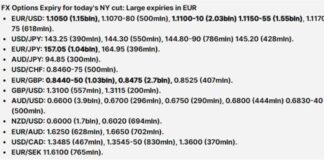As the world continues to adapt to the new normal brought on by the COVID-19 pandemic, one trend that has seen a significant surge is the adoption of contactless payments. What was once seen as a convenient solution during a global health crisis has now evolved into a transformative force in the payments industry.
Contactless payments have been in development since as early as 2008, but it wasn’t until the mid-2020s that they truly took off. The shift towards contactless payments has not only impacted cards and digital wallets but has also revolutionized tap-to-pay technologies across the board.
To explore this new frontier in the payments industry, PYMNTS sat down with two executives at the forefront of the contactless payments revolution: Visa Senior Vice President and Head of U.S. Merchant, Chris Baker, and Bank of America Managing Director: Vendor, Third Party, and Network Management, Sara Walsh.
Walsh highlighted the role that the pandemic played in accelerating the adoption of contactless payments. However, she also noted that the groundwork for this shift was laid back in October 2014 when Apple Pay made its debut. This marked the beginning of widespread contactless adoption, although usage remained relatively low at the time.
One key catalyst for the adoption of contactless payments was the integration of this technology into public transit systems. Baker pointed out that more than 30 cities in the U.S. now have contactless penetration rates exceeding 60%, with New York City’s MTA system leading the way. The widespread use of contactless payments in public transportation has paved the way for increased adoption in other contexts as well.
As contactless payments have gained traction, so too have advancements in fraud prevention measures. Tokenization has emerged as a powerful tool in enhancing security and driving increased conversion rates for merchants and issuers. Additionally, the combination of EMV chip technology and NFC for contactless transactions has significantly reduced the risk of card-present fraud and card skimming.
Looking towards the future, both Walsh and Baker see exciting developments on the horizon for contactless payments. Walsh predicts a convergence between card-based and mobile wallet-based contactless transactions, while Baker envisions a world where NFC technology is applied to a wide range of use cases beyond traditional payments.
One particularly intriguing development is the integration of biometrics into contactless payment systems. Walsh highlighted the convenience of being able to pay for groceries with a palm scan, noting that while adoption is currently low, this technology is expected to take off as people recognize its benefits.
As the U.S. market catches up to global leaders in contactless adoption, there is still significant room for growth. The recent milestone of 50% penetration in the U.S., reached in June, is just the beginning of what promises to be an exciting journey towards ubiquitous contactless usage.
In conclusion, the future of contactless payments looks bright, with innovations like biometrics and expanded use cases on the horizon. As consumers and businesses alike embrace the convenience and security of contactless payments, the payments industry is poised for continued growth and evolution in the years to come.

















